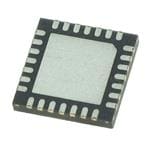Electronics play a large part in the overall tone of an electric guitar and, as such, are the most commonly upgraded parts on the instrument. Pickups, potentiometers (pots), and tone capacitors (caps) can make a large difference in both tone and noise…
If the guitar has mini potentiometers, upgrading for full size premium pots can lead to improved usability and audio quality. This will allow quicker and easier settings for a smoother taper of the volume and tone to achieve the desired sound – a reward worthy of the change. The resistance value of the potentiometer plays an important role in tone; the rule of thumb is to use 250K potentiometers with single coil pickups and 500K potentiometers with Humbucker pickups. Both are commonly found on stock guitars. Guitar pickups can often be “hot”, or sound a bit dull. To fix this, swap out the stock 250K pots with premium 500K models. This will allow the pickups to get more high-end sound while brightening up the overall tone.
The tone capacitor also plays an important role in the response of the tone knob. There are several different types of capacitors commonly used for electric guitars. Both the material used in the cap and its capacitance value will affect the tone and response of the control. The most commonly found capacitor values are .047uf and .022uf, for single coils and Humbuckers, respectively. The larger the capacitance value, the more treble will bleed off and the darker the tone control will be. The lower .022uf value tends to be great for blues and rock as there are many subtle shades available as the tone control is swept. The .047uf is great for jazz, achieving darker tones as well as being great for taming bright single coils.
There are also many different materials used for capacitors. A large portion of mass manufactured guitars come stock with a small ceramic disc caps. Many don’t use the tone control, so they never switch them out. However, for the serious tone-seeker, there are plenty of aftermarket caps available. Metal film, paper-in-oil, and polyester/foil will each have a different effect on the overall tone of the guitar as well as the response of the tone control. Testing is useful to help find the capacitor that provides the right tone.
Another cheap and easy mod is to shield the control cavity. This helps eliminate noise and interference and is especially useful for dampening the inherent 60 cycle hum of single coils. There are a few ways to do this, such as copper shielding tape or conductive shielding paint. While not necessarily a tone upgrade, the shielding will eliminate a lot of noise if done properly, but is necessary for a single-coil equipped guitar used in conjunction with a lot of overdrive or distortion in the studio.





